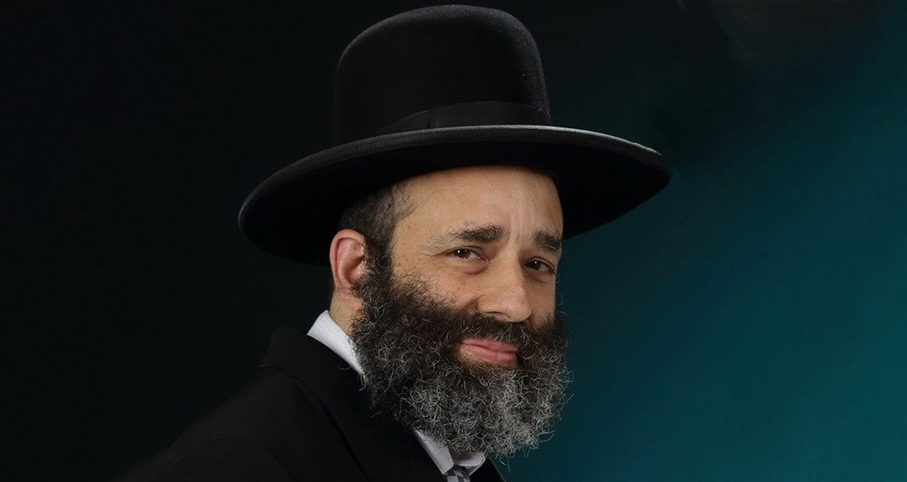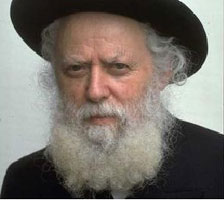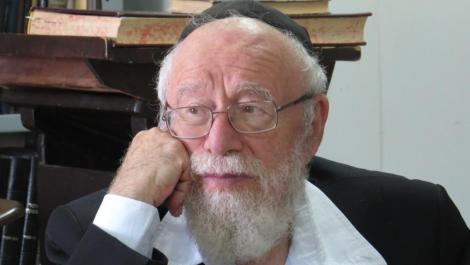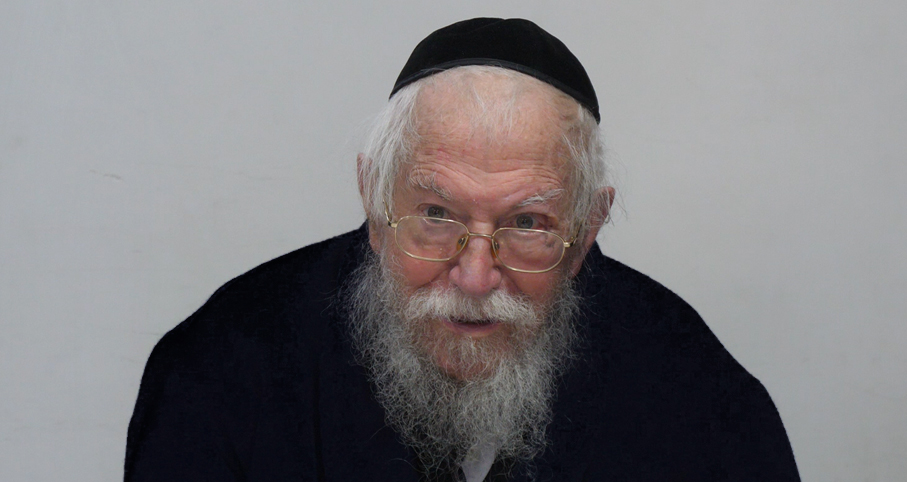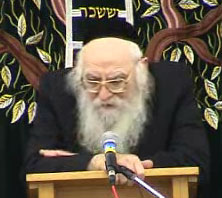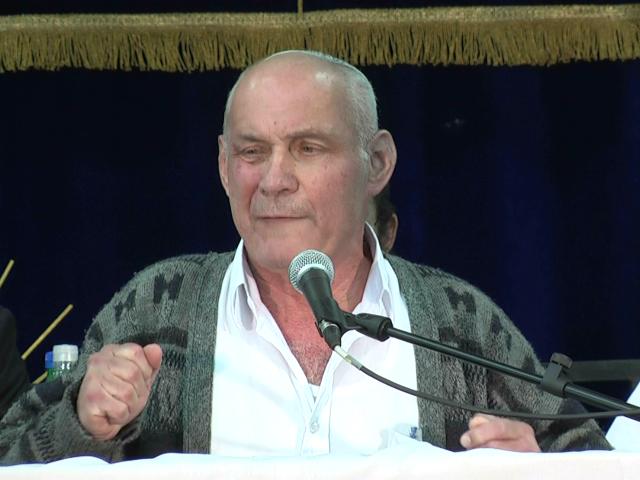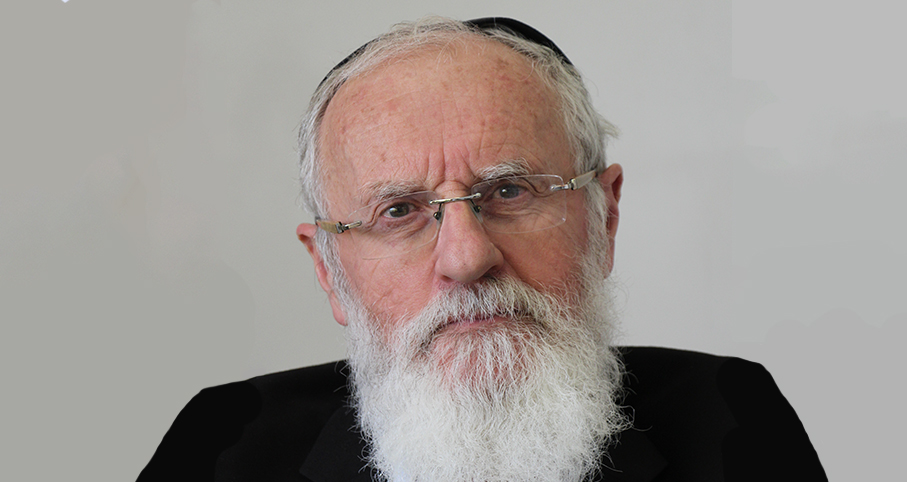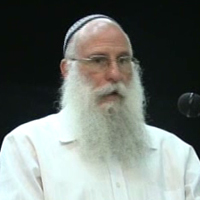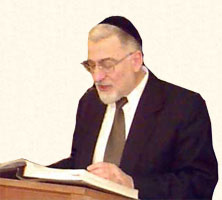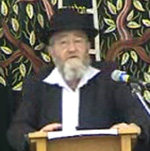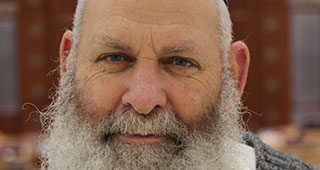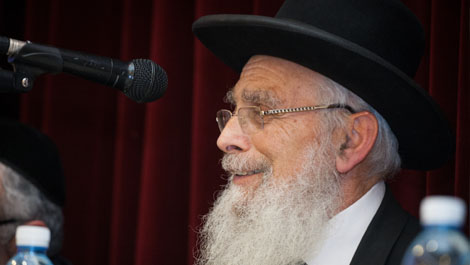Beit Midrash
- Shabbat and Holidays
- Rosh Hashana
- Shofar Blowing
"I am looking to purchase my own shofar, and I have seen that the prices vary tremendously. One can buy one very inexpensively in the Arab shuk, at a much higher price at a seforim store, and if one buys one with a very good hechsher, the price is higher.
Must a Shofar be made "Lishmah," for the Purpose of Fulfilling a Mitzvah?
Before we begin, let me explain what this term means. Many mitzvos of the Torah, such as tefillin, tzitzis, and matzoh, must be produced lishmah, for the sake of the mitzvah. This means that when manufacturing these items, even the processing of the raw materials must be for the purpose of producing an item to be used for the mitzvah. In the case of mezuzos and sifrei Torah, the tanning of the parchment must be performed knowing (and stating) 1 that this parchment will be used for the mitzvah; and in the case of tefillin, the leather used for the straps and the "batim" must also be processed for this purpose. Thus, even if we know by remote-control camera that parchment or leather was produced 100% kosher by a well-trained team of chimpanzees or a robot, the product is invalid for use for the mitzvah because it was not produced lishmah. (In the case of the robot, it is possible that the person instructing the robot to produce the parchment might qualify to make it lishmah, but this discussion is not germane to Yossi's question.) For a thousand years, great Torah scholars have debated how much involvement a gentile can have in the tanning of the parchment used for tefillin and sifrei Torah, but, again, we will soon see that this debate does not affect the laws of shofar manufacture. We certainly understand why the halacha requires one to purchase sifrei Torah, tefillin, mezuzos, tzitzis and matzos only from someone who is both knowledgeable and concerned about halacha, since otherwise, one cannot assume that they were made lishmah in addition to many other halachic concerns.
However, many mitzvos, including shofar, esrog and sukkah, do not require manufacture (or growing) for the sake of the mitzvah. Technically, a shofar is a specific type of musical instrument, and any horn manufactured in a way that meets the halachic definition of a shofar can be used to perform the mitzvah. Thus, training a chimpanzee or a robot to produce a horn that meets the proper halachic requirements could produce a perfectly good shofar. Furthermore, there is absolutely no halachic advantage to using a shofar that was produced lishmah, provided the non-lishmah shofar meets the halachic requirements.
Not the Whole Horn
Can one make changes or adjustments to a horn and still use it as a shofar for Rosh Hashanah? Is there any requirement that a shofar be complete, similar to the requirement that an esrog be complete and not split or broken?
The Gemara (Rosh Hashanah 27b) quotes a Beraisa that states: "If a shofar was long and one shortened it, it is kosher. If one scraped down the shofar until the horn was very thin, it is kosher. [However,] if one overlaid the mouthpiece with gold, the shofar is not valid. If one overlaid the outer surface of the shofar with gold such that the sound is affected, the shofar is not valid."
Let us analyze the principles we have just been taught: Shortening the length of the shofar does not invalidate it, nor does thinning out its wall. Thus, we see that there is no requirement that a shofar be "complete" in the sense that an esrog must be. Furthermore, the Gemara mentioned that a shofar remains kosher whether one thinned out the inner side or the outer side, or even both sides, so that all that is left is the substratum part of the horn that would initially be invisible. In all of these instances, although one has changed the shofar, one is still blowing pure natural shofar material from the original horn.
But Nothing but the Horn
However, we see that if one overlaid the mouthpiece with gold, the shofar is no longer valid. This is because there is now a substance intervening between the blower and the shofar; thus, he is not blowing a shofar directly, but blowing the non-shofar mouthpiece. For a similar reason, if one overlaid the outer surface of the shofar with gold such that the sound is affected, the shofar is not valid. This is because the sound generated must be pure shofar sound, not sound that has been modified by non-shofar material, even if the material is added to the outside of the shofar.
How about lengthening it?
Another Beraisa states that if one added anything to lengthen the shofar, whether from another kosher shofar or from non-horn material, the shofar is invalidated. Again, this demonstrates the same principle: the sound one is blowing is no longer that of the original horn, but includes something added to it.
Must a Shofar have a Particular Sound?
Again, this issue is discussed directly in the Gemara. "If its sound is thin, thick, or hoarse the shofar is kosher, because all shofar sounds are kosher" (Rosh Hashanah 27b ). Thus we see from this Gemara that the natural horn sound of any shofar is kosher -- regardless of its pitch or potency.
The Mouth of the Shofar
We may also note that the only problem mentioned in regard to forming the mouthpiece of the shofar is if it is overplated. There is no halachic problem with shaping the mouthpiece to whatever shape is comfortable to blow, provided one reshapes the shofar's natural horn material and does not add other material to coat it. As a matter of fact, the shofar's mouthpiece is always created from a closed piece of horn. The narrow end of the horn does not have a natural mouthpiece – quite the contrary, it is very hard and usually closed at that point, and one must first chop off its tip and then fashion an appropriate mouthpiece. To do so, one must drill the horn, or, as is done by shofar manufacturers, boil the shofar for several hours until it is pliable and then drill out a mouthpiece.
Interesting Shofar Manufacture
The wide part of a shofar is the part of the horn that attaches to the animal's skull bone. The skulls of animals with horns develop protrusions around which the horn develops and rests. Usually, one removes the bone from the horn and then fashions the horn into a shofar. There is an alterative way to make a shofar: by hollowing an opening in the bone itself rather than removing the bone from the horn. When one does this, there will be remnants of bone inside the shofar. Is such a shofar kosher?
The Gemara (Rosh Hashanah 27b) rules that such a shofar is perfectly kosher. Thus, bone is not considered a foreign substance that invalidates a shofar.
How short may it be?
The Gemara we quoted above mentioned that shortening the length of the shofar does not invalidate it. But just how short may a shofar be? The Gemara (Rosh Hashanah 27b) asks this exact question:
"How long must a shofar be? Rabbi Shimon ben Gamliel explained: 'Large enough that you can hold it in your hand and it can be seen on both sides.'" Such a shofar is only a few inches long, yet it is 100% kosher. Elsewhere, the Gemara (Niddah 26a) notes that this equals the size of a tefach.
The "Inverted" Shofar
The Gemara (Rosh Hashanah 27b) mentions a different problem one could create with a shofar: If you "inverted" the shofar, you invalidated it. The Gemara mentions two different ways one can "invert" a shofar. One is by softening the horn material so much that you turn the shofar inside out. In this instance, the sound is produced by blowing through what originally was the outside of the horn. The other way of "inverting" a shofar is by widening the narrow end of the horn and narrowing the wide end so that one has inverted the direction through which one would usually blow the shofar. Both of these cases are invalid, because a shofar must be blown in its natural way.
Review of Invalid Shofars
From the background we have so far, we see that one could invalidate a shofar by inverting it, plating its mouthpiece, or overlaying it extensively. None of these are common problems for which one need be concerned. One can readily notice if a shofar's mouthpiece or outside has been plated with non-shofar material. Does one need be concerned that an enterprising shofar maker plated the inside of the shofar or inverted it?
Halacha makes a general assumption that one does not need to be concerned about a problem that is highly unusual. It would seem highly unusual for someone to turn a shofar inside out and then make it look as if this were its natural growth. Similarly, when I asked people whether the inside of a shofar is ever "plated," I was told by three different artisans that they cannot imagine why anyone would do such a thing. Thus, if these were the only causes for concern about shofar kashrus, there would presumably be no reason not to purchase one of those beautiful shofaros that are for sale very inexpensively in the Arab shuk or elsewhere.
Cracked and Holey Shofaros
However, we have as yet not discussed a complicated area of shofar kashrus. What is the Halacha if a shofar develops a crack or hole? Does this invalidate the shofar? Does plugging the hole afterwards help or hinder the problem? Does it make a difference what is used to plug or mend the shofar?
To explain this topic thoroughly, I will divide the topic into three areas, each of which has its specific halachic details: These are:
(1) A widthwise crack
(2) A lengthwise crack or split
(3) A hole in the shofar
A Widthwise Crack:
The Gemara (Rosh Hashanah 27b) quotes a Beraisa that states: Nisdak… lerochbo, im nishtayeir bo shiyur tekiyah, kosher; ve'im lav, pasul, "A shofar that is split… widthwise if the split is at a point beyond the minimal length, the shofar is kosher, and if not, the shofar is invalid." As we mentioned above, the minimal length of a shofar is a tefach. If the shofar sustained a widthwise split beyond this point, the shofar is kosher, since this shofar would be kosher even if the part beyond the split was cut off. 2 This is true even if the split affects the sound of the shofar. 3 Furthermore, even if the widthwise split is within the first tefach of the shofar, it invalidates the shofar only if more than half the circumference of the shofar is split; but, if it is smaller, the shofar is kosher. 4
Thus, the only way a widthwise crack would invalidate a shofar would be if it were split more than half the circumference of the shofar and within the first tefach of the shofar (the part nearest to its mouthpiece), a very unlikely scenario.
A Lengthwise Crack
The Mishnah (Rosh Hashanah 27a) declares: Shofar shenisdak vedibko pasul, "A shofar that is cracked 5 and was bonded together is invalid." On the other hand, the Gemara (Rosh Hashanah 27b) subsequently quotes a Beraisa that adds: Nisdak le'orcho, pasul, "a shofar that is split lengthwise is invalid." The Rosh notes that the latter discussion omits any mention of this shofar remaining invalid even if it is subsequently bonded together; he understands this to imply that one may mend this crack and make the shofar kosher again. However, this conflicts with the statement of the Mishnah that invalidates a cracked shofar that has undergone repair.
Among the Rishonim we find three halachic approaches to this issue.
(1) The most stringent position:
The Rosh himself concludes that the Beraisa and the Mishnah are not describing the same case. The Mishnah is discussing a shofar that was split its entire length. 6 Such a shofar remains invalid even if it was subsequently repaired. However, the Beraisa discusses a shofar that has a small crack. In the Rosh's opinion, a shofar that has even a tiny lengthwise crack is invalid until the crack is repaired. The reason why this shofar may not be used is because a lengthwise split left unrepaired will eventually cause the shofar to split completely; therefore, such a shofar is already ruled invalid. However, this shofar may be repaired and revert to its kosher status, whereas a crack the entire length of a shofar may no longer be repaired.
(2) The moderate position: 7
This approach also accepts that one may repair a shofar whose split is not the entire length of the shofar. However, this opinion contends that a shofar with a split less than half its length may be used without any repair at all. Only where the lengthwise split extends more than half the shofar's length is there a need to make repairs.
(3) The most lenient position rules that one need be concerned only about a crack that runs the entire length of the shofar, and such a crack cannot be repaired. However, any crack that does not extend the entire length of the shofar does not invalidate it, and the shofar may be used as is. 8
To sum up: The third opinion contends that one may ignore a crack that is less than the full length of the shofar, the second opinion rules that any crack more than half the shofar's length requires repair, and the first opinion contends that every lengthwise crack requires repair.
How do I Repair the Crack?
Assuming that we invalidate a cracked shofar until it is mended, does it make a difference how I repair the crack in the shofar? In this case, we find a dispute among early authorities whether the shofar will be kosher if repaired by gluing it together. Some contend that gluing the shofar together invalidates it, since glue is a foreign substance (Ramban). According to this approach, this shofar can be repaired only by heating the horn at the point of damage it is welded together.
The Rosh disagrees with this approach, contending that since glue becomes totally inconspicuous in the finished shofar it is kosher. This last opinion is the accepted halacha, although one should rely on this only if the crack did not affect the sound of the shofar and the use of glue is not obvious. 9 Otherwise, one will be required to weld the horn, rather than gluing it, as I described above.
Does this require a Hechsher?
Herein, then, lies an issue. Do we need a guarantee that if a shofar was damaged it was repaired by welding and not by gluing? There is no reason to assume that a non-Jewish, non-observant or non-knowledgeable shofar crafter would repair a damaged shofar by welding it. To compound the concern, shofaros made for sale are always polished to provide the beautiful, but non-natural, sheen that the customer expects to see on his shofar. This polish may mask any damage and repair that was made when the shofar developed a crack, and only a highly trained expert may be able to notice such a repair.
A Holey Shofar
At this point, we need to return to the other problem that the Mishnah mentioned -- a case where there is a hole in a shofar. From what I understand, this happens fairly often while drilling to create the shofar's mouthpiece. The Mishnah states: Nikav vesasmo, im me'akeiv es hatekiyah, pasul; ve'im lav, kasher, "If a shofar has a hole in it 'that' was subsequently plugged, if 'it' affects the sounding, 10 then the shofar is invalid, and if not, the shofar is valid."
There are three critical questions here that impact on our discussion:
(1) Does the Mishnah mean that the shofar is invalid because it has a hole ; or because the hole was plugged , but the hole itself is not a concern?
(2) Does it make any difference what material was used to plug the hole?
(3) Does the Mishnah mean that the hole changed the sound of the shofar, or that the plugging changed the sound?
Let me explain what each of these questions mean and how they affect the halacha. It is curious to note that each of these three questions is the subject of a dispute among early authorities.
1. Does the word "that" (i.e., the "vov hachibur" of vesasmo) in the Mishnah here mean "because the hole was plugged?"
If the Mishnah means "because" the hole was plugged, then the Mishnah is teaching that a shofar with a hole is kosher – it is the plugging of the hole that creates the problem.
Why should this be true? It seems counterintuitive that the hole in the shofar does not present any problem, but plugging it creates a problem.
The answer is: We mentioned above that any natural shofar sound is kosher; according to this opinion, this includes even a shofar with a hole (Rosh; Tur). Although the air escaping through the hole may affect the sound the shofar produces, whatever sound produced is from the shofar, not from anything else. However, when the shofar is plugged, the sound is now being produced partially by the plug, which is not part of the shofar. Therefore, this opinion rules that a plugged shofar is not kosher if it produces a sound different to that which was produced before it was plugged.
As a matter of fact, this is the way the Shulchan Aruch (Orach Chayim 586:7) rules. Following his approach, if a hole develops in a shofar, one is best off doing nothing to the shofar, since a shofar with an unplugged hole is perfectly kosher.
Although many authorities consider this a perfectly kosher shofar, practically it does not provide us with a halachic solution. No shofar manufacturer will leave a shofar this way, since the typical customer will not purchase a "holey" shofar.
In addition, not all authorities accept this understanding of the Mishnah. The Rambam, in his Commentary to the Mishnah, rules that a shofar with a hole is not kosher, and the Bi’ur Halacha (586:7 s.v. She'ein) notes several other Rishonim who agree with this conclusion. The Rama (Orach Chayim 586:7) concludes that one should use such a shofar only when he has no other option.
At this point, we should address the second question: The Mishnah states that a shofar with a plugged hole is not kosher. Does it make a difference what material one uses to plug the hole?
The Gemara (27b) quotes a dispute between the Tanna Kamma and Rabbi Nosson whether the Mishnah's plugged shofar is invalid regardless of what one used to plug it, or only if it was plugged with non-shofar material. Rabbi Nosson contends that if a shofar is repaired with shofar material (mino, literally, of its type), the shofar is kosher, even though its sound has changed. The Tanna Kamma disagrees, contending that whether the hole was plugged with shofar material or with non-shofar material, the shofar is invalid if its sound changed. Most Rishonim rule according to Rabbi Nosson, which means that a "holey" shofar subsequently plugged with pieces of shofar is kosher.
Now it is time to answer the third question that I asked and to clarify the halachic conclusions of this issue: Does the Mishnah mean that the hole changed the sound of the shofar, or that the plugging changed the sound? The resolution of this question is two major halachic opinions. According to the Rambam (Hilchos Shofar 1:5), a shofar with a plugged hole is kosher only if it sounds the same after the repair as it did before the hole developed, and it was repaired with shofar material. If it sounds different after the repair, the shofar is invalid, and it is also invalid if it was repaired with non-shofar material, even if the repair is so good that the sound of the shofar is identical to what it was before the damage. On the other hand, the Rosh rules that the shofar is kosher if it sounds the same after the repair, even if it was repaired with non-shofar material; furthermore, the shofar is kosher if it was repaired with shofar material, even if the sound changed as a result.
This dispute is mentioned by the Shulchan Aruch (Orach Chayim 586:7) where he rules, as does the Rambam, that one may not use a shofar plugged with non-shofar material, unless there is no other shofar available.
Shofar Repair Conclusions
To sum up what we have just learned: A shofar with a widthwise crack will almost always be kosher (unless its crack covers over half its circumference and is within the tefach of the shofar nearest the mouthpiece); one with a lengthwise crack is invalid according to some authorities if left unrepaired, but once repaired, even with glue, is kosher according to the main halachically accepted opinion. However, if the crack is severe enough to affect the sound of the shofar or so big that use of glue would be obvious, the shofar may not be repaired with glue.
A shofar with a hole large enough to affect its sound is invalid, unless it is patched with kosher shofar material in such a way that it returns to its original sound. However, if it is repaired with non-shofar material, it is invalid and may be used only
if no other shofar is available.
By the way, horn material can be boiled until it becomes very satisfactory glue. It would seem to me that using this glue to repair a damaged shofar would satisfy the requirements of being mino, repaired with shofar material. In practical terms, I know of no shofar manufacturer who uses such glue to repair a damaged shofar.
Having explained all the basic halachos of shofar, let us attempt to resolve in practical terms what can go wrong. Although plating the inside of a shofar would invalidate it, there is neither reason nor incentive for a shofar manufacturer to do this. The major halachic concern seems to be if the shofar became cracked or damaged, and then was subsequently repaired. According to the conclusion of Shulchan Aruch, if the shofar was repaired with non-shofar material, which is the likely situation, then the shofar may be used only when no other shofar is available (and only if its sound is the same as it was originally).
A Homemade Shofar
Before discussing what can happen in the course of commercial shofar production, I wanted to share a note I received from a contact of mine who makes his own shofaros. This is his description of the process:
"I have made many shofaros in my time, which I have made from 'lamb' horns that I acquired directly from a meat packing plant. I don't heat the shofar. Instead, I cut the narrow tip of the horn until I have an angle from which I can drill straight through to the hollow part. I then shave down the outside of the mouthpiece and shape the inside of the mouthpiece with a power grinder. My shofaros are very small since the 'lamb' that is slaughtered is a young animal.
"I do not polish my shofaros, whereas commercial shofaros are highly polished. Their horns are usually heated and straightened in order to drill the hole, and then heated again to put the curve back."
The Commercial Manufacture of Shofaros
Now that we are aware that hard-to-detect problems could develop during manufacture that could invalidate a shofar, we need to analyze what one can do to rectify them, and to see to what extent one must be concerned. In order to understand these issues better, we need to first understand the commercial shofar business.
Most shofaros sold today are made in one of numerous, small family-operated factories scattered around Eretz Yisrael. To make a horn usable as a shofar, the shofar is first boiled, which allows one to remove the skull bone from the shofar. This leaves a hollow end on the wider end of the horn, the part that attached to the ram's head. However, the narrower side of the horn is not hollow: The horn grows thick on this side, and must be drilled until one reaches the hollow part of the horn. It addition, one must create a usable mouthpiece on the narrow part of the horn. Commercial facilities heat the shofar until it is soft and malleable, reshape it so that they can drill out the unwanted internal horn, and then form a mouthpiece in the shofar. They then sand, buff and polish the outside of the shofar, sometimes adding a lacquer to give it a nice sheen. According to all sources I spoke to, the lacquer does not create a problem of an overlaid coating that affects the shofar's sound, since the lacquer does not modify the sound in any way discernable to the average person.
What happens if, while drilling the shofar, a hole is created? Unfortunately, few of the shofar crafters are that halachically concerned. I think it is a fair assumption that most shofar makers would simply take an acrylic or similar glue and fill the hole. Thus, enters the potential role of the hechsher.
What is the Role of a Hechsher on Shofaros?
This is a very good question. In my researching shofar problems, I discovered many different methods and standards of hechsher on shofaros.
The Minimal Standard
The minimal standard hechsher does not check the shofaros at all, but is simply certifying that each shofar is indeed manufactured from a ram's horn. There is some value to this hechsher, since there are commercially available "shofaros" that are made of quality plastic, but look, feel, and blow like a shofar. Someone who careful examines a variety of the small shofaros sold will discover that, except for the coloring, many of the shofaros are identical or mirror images. The reason is simple: They are all plastic and poured into a mold. To make them look different, diverse colors of plastic are made. None of these shofaros is kosher.
Thus, the "minimum standard" hechsher assures you that the issuers of the certificate are comfortable that what you purchased is genuine ram's horn. However, the standard of this hechsher is not concerned about any problems that occur to the shofar during manufacture. I presume that the rationale behind this hechsher is that these problems do not occur frequently enough for concern. I admit to finding this standard of hechsher very wanting.
A Significant Improvement
A much higher standard is a hechsher on the individual. Some Rabbonim provide a "hechsher" that says that they know that the manufacturer of this shofar is a halacha-abiding Jew who does not use any shofar that develops a crack or hole in the course of production. Although it would seem that this hechsher is unnecessary, based on the research I performed most shofar manufacturers do not meet this standard. Notwithstanding that the person who began the business usually was an observant Jew, the current operators of the business are often not very observant.
"What does a concerned manufacturer do when he has a hole in a shofar?" I asked this question, and was told: He sells the shofar to non-Jewish manufacturers. Apparently, there is a large market of shofaros that are made for sale to non-Jews who have a Biblical interest in them.
Another Standard
A different standard is used by other hechsherim. The distributor or store that wants to sell a particular shofar has it checked by a highly skilled rav/mashgiach, who knows how to check a shofar for any signs of damage or repair. Any shofar that shows such signs is rejected.
By the way, in my researching, I also did some comparative price shopping and asked Yossi to do the same, to see if a hechsher added significantly to the price of the shofar. The answer was that it did not. The price of a shofar was primarily linked to its size, and to the amount of markup the particular retail store added. In some instances, the existence of a hechsher increased the price of the shofar, but not significantly.
What is the Chance that my Shofar has a Problem?
How frequent is it that a shofar develops a hole during its production? There is no way anyone can answer this question definitively, since no one has conducted a survey on the subject, and it would be almost impossible to perform such a survey. A friend of mine who has attempted to visit shofar factories tells me that they usually do not allow visitors, and are probably not likely to reveal the type of information we are asking.
Notwithstanding this lack of information, I think we can safely assume that (1) since the people making shofaros are indeed craftsmen, and (2) it is highly disadvantageous to drill a hole while cleaning out the horn, that (3) the majority of shofaros are made without making unwanted holes during the processing. This is of course assuming that we know the shofar is made from ram’s horn and not plastic, something we should definitely ascertain.
So does a shofar need a hechsher? This was Yossi's original question, which he asked me again after we had both conducted our research. I told him that I would personally ask for a letter from a known rav verifying that he knows that the manufacturer of this shofar is a halacha-abiding and knowledgeable Jew. It is difficult for me to imagine that a frum Jew cannot provide such a letter.
^ 1.Whether one must state that one is performing the activity lishmah or it is sufficient to have this in mind is addressed by the Rosh in his Hilchos Sefer Torah Chapter 3, several places in Shulchan Aruch and many other authorities.
^ 2.Rambam, Hilchos Shofar 1:5
^ 3.Shulchan Aruch Orach Chayim 586:9
^ 4.Shulchan Aruch Orach Chayim 586:9
^ 5.Mishnah Berurah 586:38 notes that this means that the crack went through and through the shofar at this point.
^ 6.There is actually a dispute between Rashi and Tosafos on this point. Rashi's opinion is that the Mishnah discusses a shofar that split completely into two sections and was then glued together. This shofar is invalid because it is halachically treated as two separate units, and the subsequent bonding does not make it into a shofar again. The Rosh, and most Rishonim, follow Tosafos' opinion that the Mishnah refers to a shofar split in only one place, but the split runs the entire length of the shofar. Thus, although the shofar is still one piece, it is unusable as is without being glued together.
^ 7.Magid Mishnah, Hilchos Shofar 1:5
^ 8.The Rosh quotes this approach, but ultimately rules against it.
^ 9.Mishnah Berurah 586:46
^ 10.This is the way the word me'akeiv is understood by virtually all Rishonim (e.g., Raavad; Tosafos; Rosh; Tur; Magid Mishnah).
This Shiur is published also at Rabbi Kaganof's site
Praying for the Big Shofar
Rabbi Gideon Weitzman | 5764

Shofar Blowing during the Silent Amida
Rabbi Daniel Mann | 25 Elul 5783
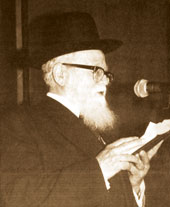
Great Shofar, Weak Sound
based on Aroch Siach, Yamim Noraim, p. 106
Rabbi Shaul Yisraeli zt"l | Elul 26 5780

